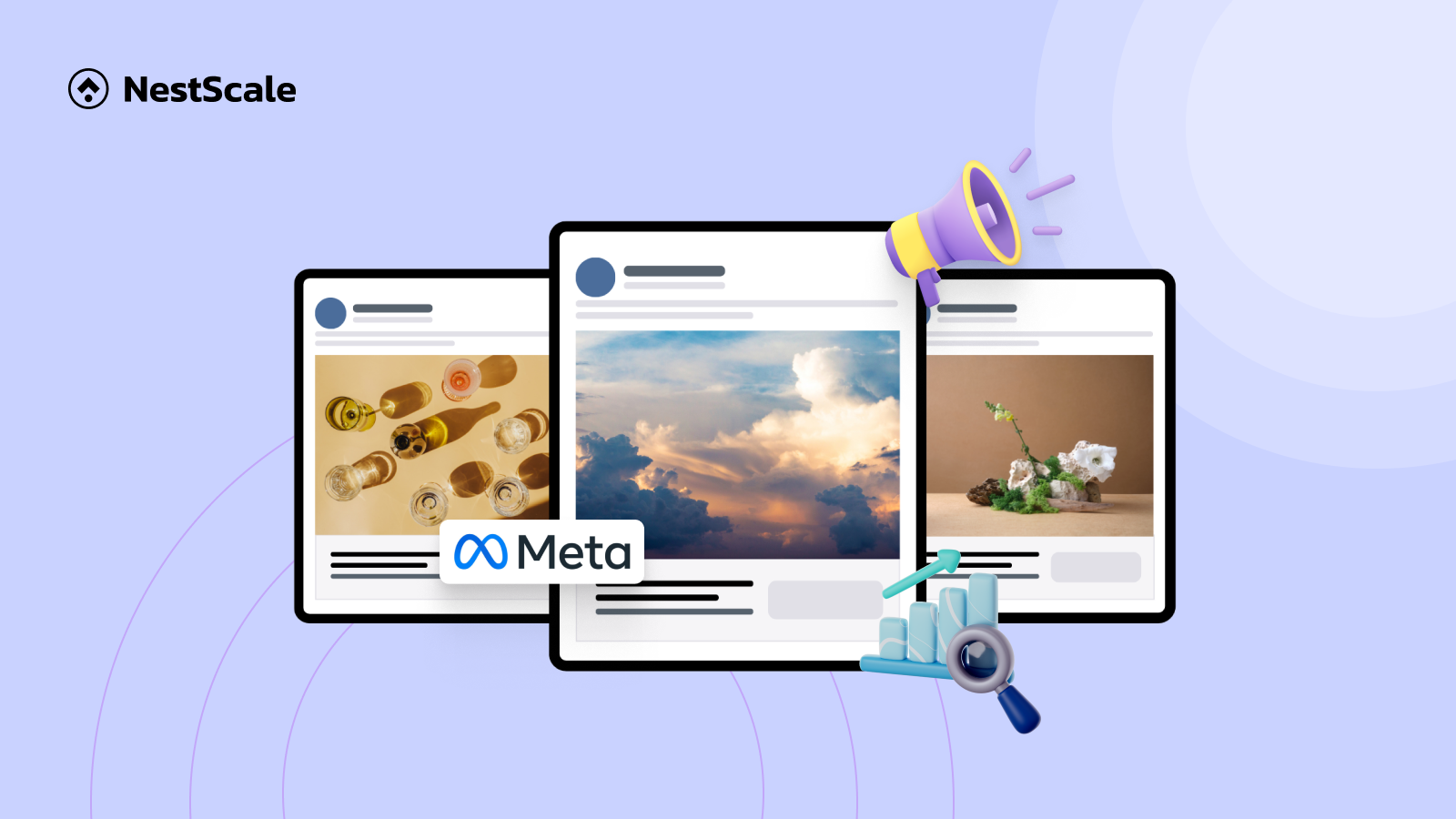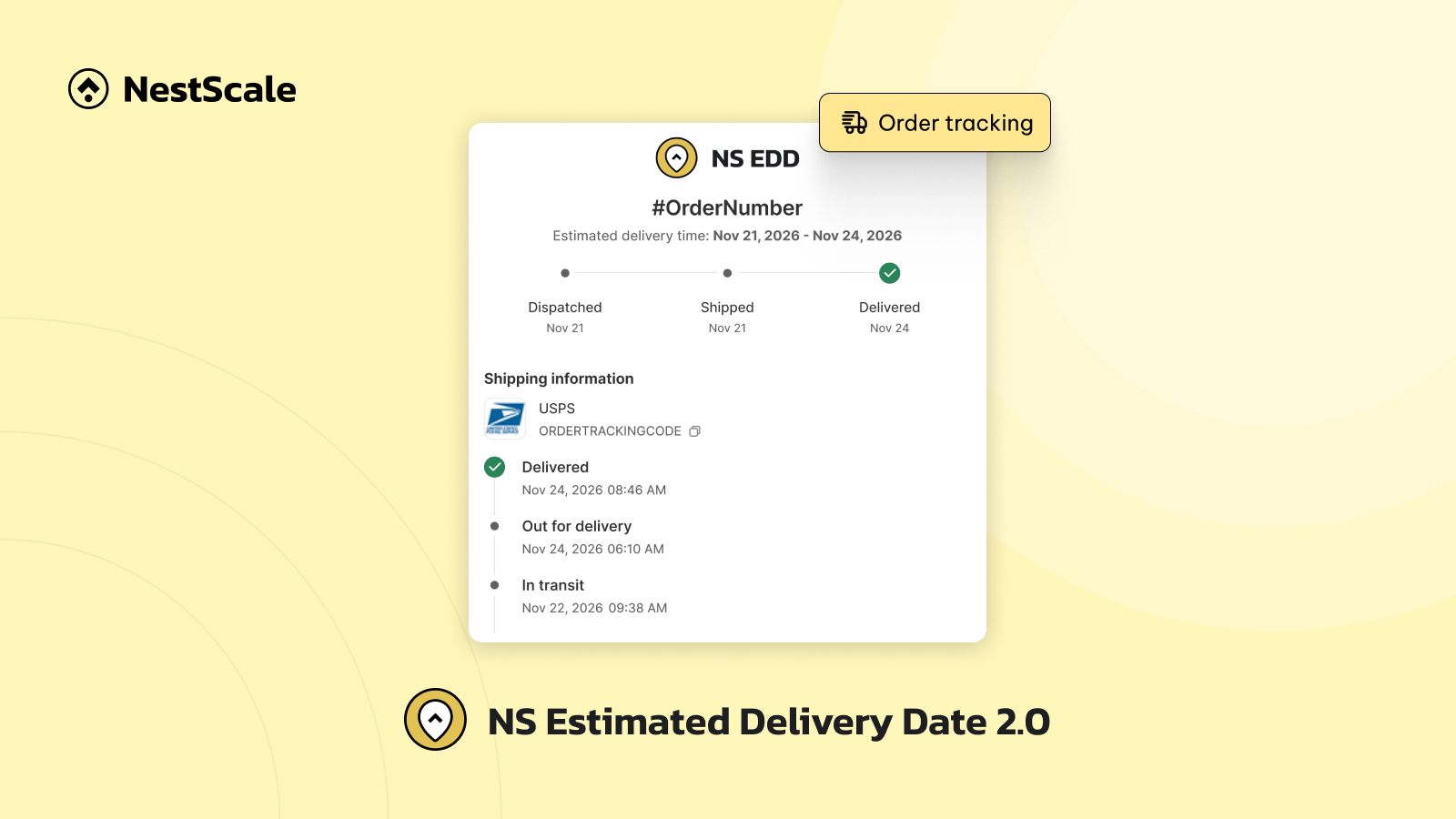Welcome to our comprehensive guide on Facebook Dynamic Creative Optimization (DCO)! In this blog, we’ll dive deep into the world of dynamic creative optimization, exploring its definition, benefits, successful examples, and implementation strategies.
If you’re new to DCO or seeking to enhance your understanding and implementation of this powerful advertising tool, you’re in the right place. We’ll equip you with the knowledge and insights needed to leverage DCO effectively and maximize the impact of your Facebook Ads campaigns. Start this journey to unlock the full potential of dynamic creative optimization together!
What is Facebook Dynamic Creative Optimization?
Facebook Dynamic Creative Optimization (DCO) involves automatedly utilizing various media types, including images and videos, and diverse ad elements such as text, audio, and calls-to-action. The system then combines and reconfigures these components, making the ad variations to enhance the effectiveness of your advertising.
Each ad variant is presented to a subsection of your target audience, and the algorithm assesses their response to determine if the variant is suitable for that particular sub-audience. If successful, similar individuals within your target audience will also be exposed to the same variant based on their characteristics and engagement.

Here are some examples of Facebook’s dynamic creative optimization:
- Developing a Stories carousel ad utilizing either a sole image, headline, or details from a product catalog.
- Exchanging text between different sections, like moving text from the primary text field to the headline.
Facebook Dynamic Creative vs. Dynamic Creative Optimization
Indeed, there is a difference between Facebook Dynamic Creative and Dynamic Creative Optimization, despite occasional confusion. While Facebook Dynamic Creative involves manually selecting each element to compose an ad, DCO is a strategy designed to experiment and determine the most effective combination of creatives.
Dynamic creative entails individual setup for diverse audiences, providing limited control. This approach is suitable for small businesses or those preferring straightforward automation. Conversely, DCO serves as a strategy to assess ad effectiveness, making it ideal for larger campaigns or those requiring more advanced optimization techniques.

Pros & Cons of Facebook Dynamic Creative Optimization
Have explored the difference between dynamic creative and dynamic creative optimization (DCO). Then, you may wonder whether the advantages of using DCO outweigh the disadvantages. Follow the next part to have a comprehensive estimation:
| Pros | Cons | |
| Automation | Saves time and effort by generating and displaying optimal ad variations. | Requires upfront planning and preparation to define variables and ensure effective combinations. |
| Performance Optimization | Identifies winning ad combinations through data-driven analysis, allowing budget allocation to high-performing variations. | Can be time-consuming to monitor and test multiple variables effectively. |
| Targeting | Leverages user data (display, location, buying patterns) for deeper personalization and targeting, potentially leading to higher conversion rates. | Costly to produce creative assets and test numerous variations to determine optimal combinations. |
How to set up Facebook Dynamic Creative Optimization
First, head to your Meta Ads Manager and create a new ad campaign. Then, select the main campaign objective you want to focus on.

After setting up your campaign, you can adjust additional settings. You have the option to turn on two features: A/B testing and Advantage campaign budget.
- A/B testing: This lets you compare different ad creatives to see which one performs better.
- Advantage campaign budget: This allows you to set a budget for the entire campaign instead of allocating funds to individual ads.
Next, click Next so we can proceed to set up your ad set.
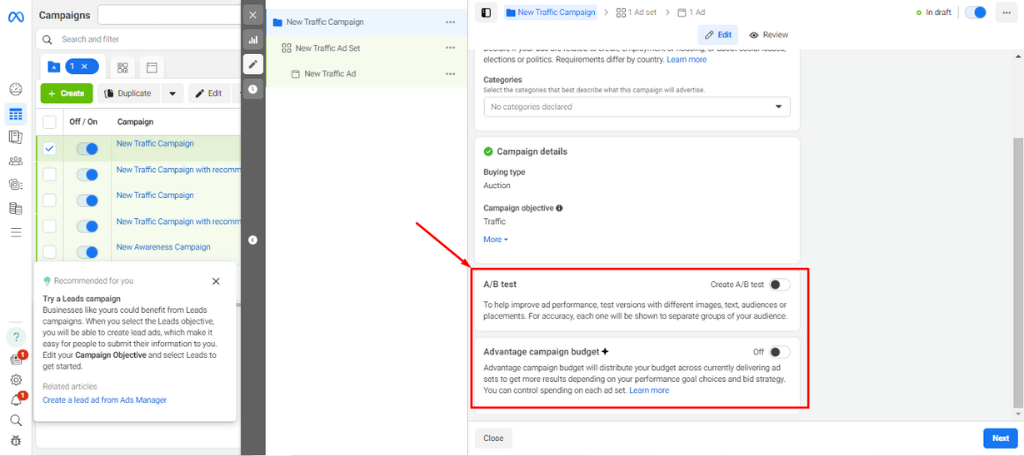
At the ad set level, scroll down until you find the Dynamic Creative section. To set up Facebook Dynamic Creative Optimization, simply turn this toggle on.
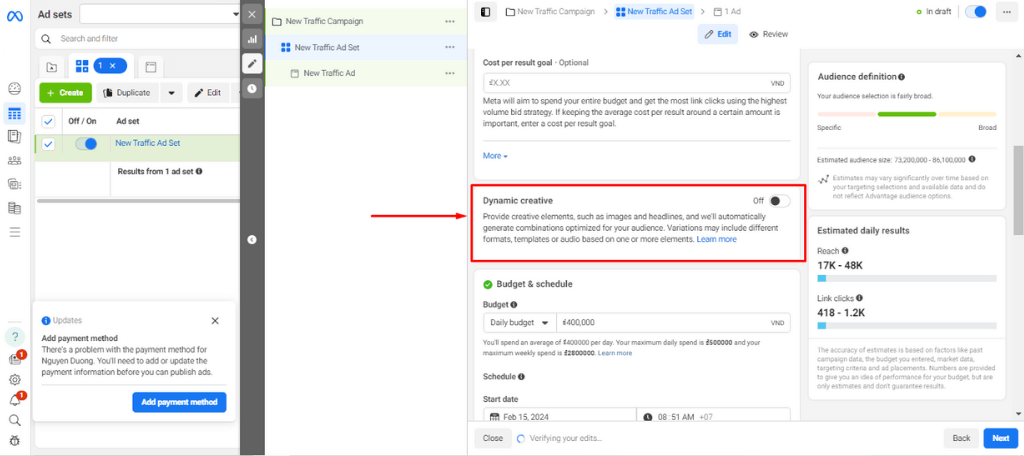
Scroll down even further until you reach the placement section. Facebook gives you the choice between Advantage+ placements or manual placements:
- Advantage+ placements: Facebook automatically shows your ads to the audience most likely to help achieve your objectives within your set budget. This is the option Facebook recommends.
- Manual placements: If you’re targeting a specific audience or prefer more control over where your ads are shown, choose manual placements. This allows you to select your target audience manually.
For Facebook Dynamic Creative Optimization to function effectively, select Advantage+ placement. Then, click Next to proceed with setting up your ad.

Finally, at the ad level, you’ll find the Optimize Creative for Each Person toggle. Turn this toggle on. Now, you’ve completed setting up different variations of creative combinations for your audience to achieve the best results.
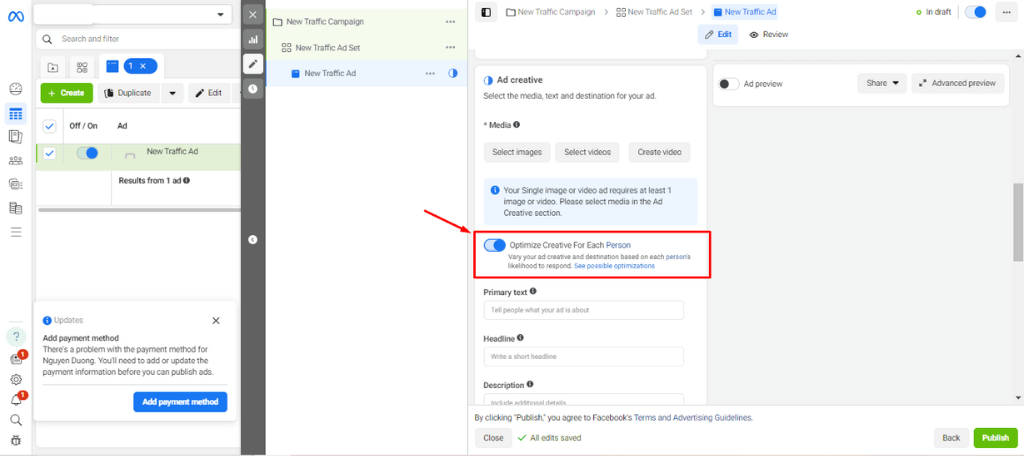
Best Dynamic Creative Optimization practices
DCO could be a right-hand assistant to leverage your ad or your campaign on Facebook. Here is the step-by-step guide for you to make use of this tool.
Ensure the asset quality
Ensuring the quality of assets is paramount when uploading content to Facebook. High-quality assets not only contribute to a more visually appealing presentation but also enhance the overall user experience. Prioritize the use of clear, sharp, and well-composed assets. Blurry or pixelated images, low-resolution videos, or poorly designed graphics can negatively impact the perception of your brand or message.

Select assets that complement each other when combined
You have the option to choose up to 10 assets for your dynamic creative ad. Nevertheless, we advise focusing on quality rather than quantity. Opting for the combination of 2 compelling assets is more effective than using several assets you may be less confident about. If you currently lack a variety of image and video assets, you can also integrate multiple text assets as a simple way to initiate your dynamic creative campaign.
Make use of sound effect
Create videos that engage viewers even when the sound is mute since many individuals watch videos without sound, particularly in public places, but strive to enhance the experience when the sound is enabled. As reported, users often prefer sound-on experiences, so select audio elements thoughtfully. Experiment with trending sounds, incorporating them into your video alongside text, graphics, and visual storytelling. Additionally, include captions whenever feasible to ensure effective communication of your message.
Incorporate various call-to-action buttons in your ad
Clearly define the desired action you want viewers to take after seeing your ad. Experiment with different buttons to determine which ones yield the most effective results. This could include actions like “Shop Now,” “Learn More,” or “Sign Up.” The use of multiple buttons provides flexibility in testing and optimizing the ad’s performance based on audience engagement and preferences. However, do not try to cram them all in one post! One or two is already enough to draw customers’ attention.
Select the optimal aspect ratio for the platform
Given that most individuals hold their phones vertically, opt for a vertical aspect ratio suitable for platforms like Facebook Feed and Stories to optimize the user’s experience. Create short and captivating messages that quickly grab users’ attention and effectively convey your content. Make sure the text is easily readable on smaller screens by utilizing adaptive font sizes and legible typography.

To truly unlock the potential of Facebook DCO, it’s crucial to carefully analyze every creative used in your campaign. Keep a close eye on their performance to identify which creatives are more effective, discover the patterns leading to success, and figure out how to apply these insights to future ads. This approach will optimize DCO’s effectiveness and help you achieve better results on a limited budget.
Therefore, managing your ads should go beyond just the campaign, ad set, and ad levels; it’s essential to dive deeper into the creative level. For example, NestAds offers Creative Report solutions that allow you to see the revenue and profit each creative brings to your campaign. This insight helps you identify the top-performing creatives for further optimization in retargeting campaigns or to understand the ad elements that are attracting customers.




































